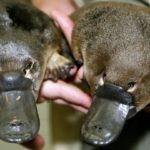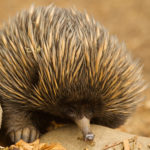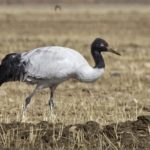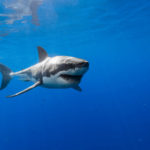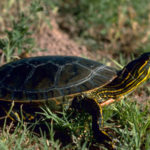Facts about Platypus
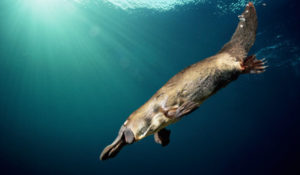 The Platypus is one of the most interesting inhabitants of the Australian continent. In the first, when the scientists saw the skin of the platypus, they did not believe and thought that a taxidermist had joked over them, sewing a beak to the beaver’s skin. Then the English botanist and zoologist George Shaw managed to prove that the skin really belongs to an animal, unknown at that time, science. More than 200 years passed since the meeting of Europeans with the first platypus. But so far scientists continue to surprise us with new discoveries and facts about platypuses.
The Platypus is one of the most interesting inhabitants of the Australian continent. In the first, when the scientists saw the skin of the platypus, they did not believe and thought that a taxidermist had joked over them, sewing a beak to the beaver’s skin. Then the English botanist and zoologist George Shaw managed to prove that the skin really belongs to an animal, unknown at that time, science. More than 200 years passed since the meeting of Europeans with the first platypus. But so far scientists continue to surprise us with new discoveries and facts about platypuses.
- After the discovery of platypuses, the scientists for 27 years did not know which class to include these animals. Only when the German biologist Meckel discovered the mammary glands in the female platypus, they were taken to mammals.
- The female platypus lays eggs as reptiles or birds.
- In platypus among all mammals, the slowest metabolism in the body. But if necessary, for example, for warming in cold water, the platypus can accelerate the metabolism 3 times.
- The normal body temperature of the platypus is only 32 ° C.
- There are only two mammals able to perceive electrical signals, and one of them is the platypus. With the help of electropolation platypuses can catch the electric fields of their prey.
- Platypus is poisonous, but only males. Each male platypus on the hind legs has spurs that are connected to the gland on the thigh. In the mating season, iron produces a very strong poison, easily killing an average animal, for example, a dingo dog. Although for humans, the poison of the platypus is not fatal.
- In male platypus, the testis is located inside the body near the kidneys.
- The platypus lives only in fresh water, never swimming in salty waters.
- The platypus beak is soft, and not hard as in birds, covered with skin.
- Paws of the platypus are designed for both swimming and digging the earth.
- Female platypus has no brood bag and nipples. Milk flows directly over the wool, and the kids just lick it.
- The platypus live on average about 10 years.
- The platypus is depicted on the 20th Century coin of Australia.
- Under the water the platypus see nothing, do not hear and do not smell, since the valves of the nostrils, grooves of the ears and eyes are closed.
- Annually, platypuses fall into hibernation for 5-10 days, after which the mating season begins.


